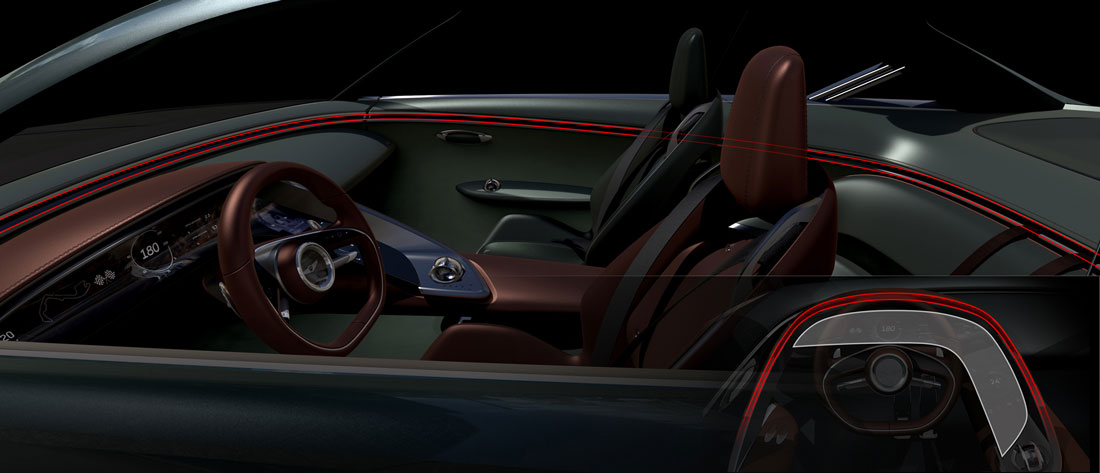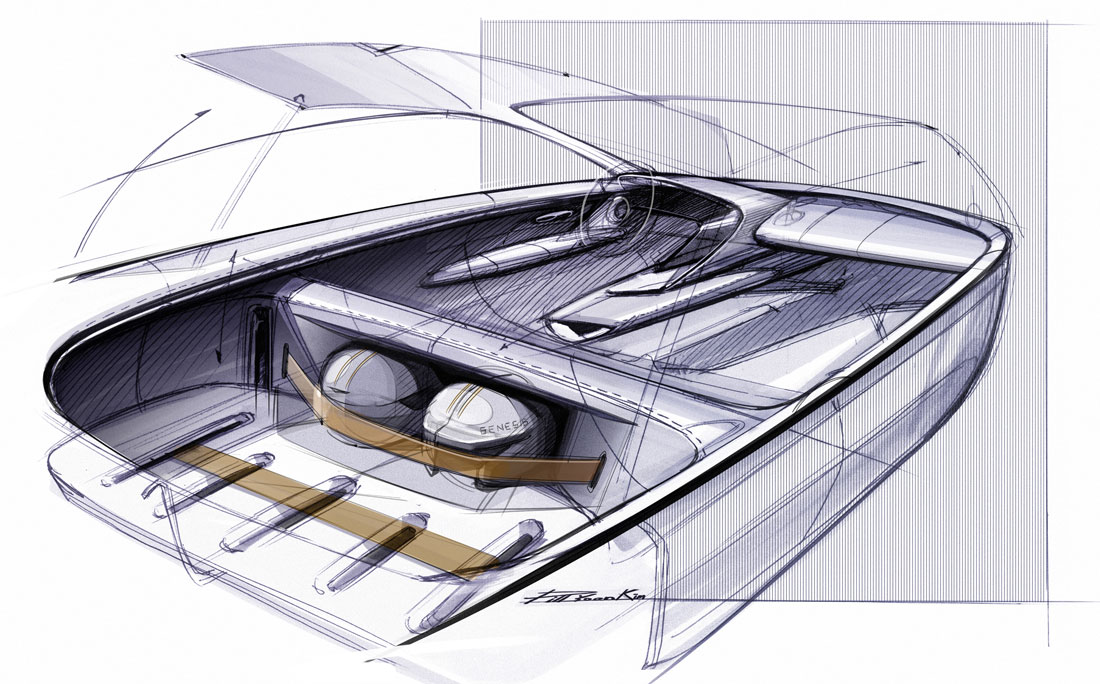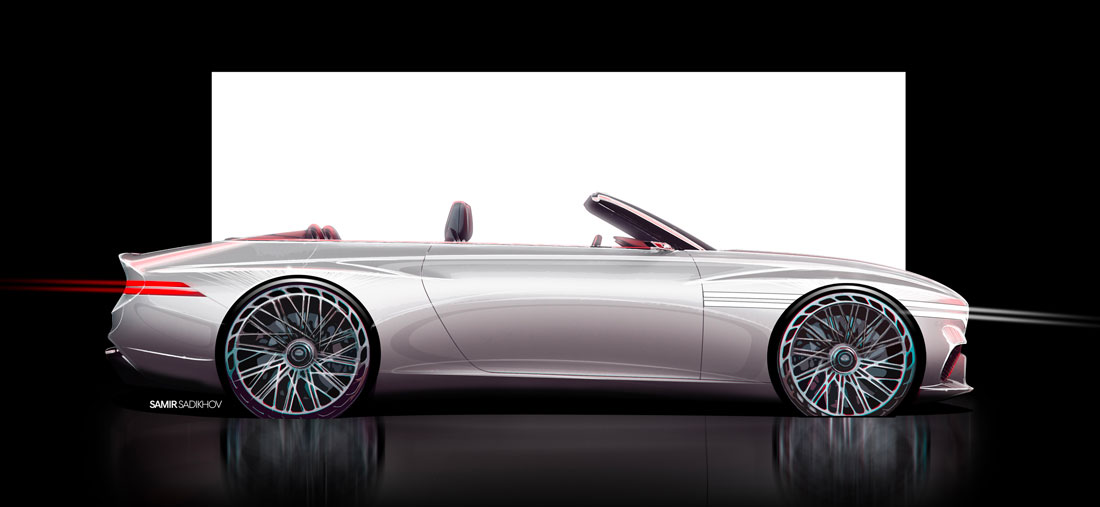“Seven years after the Genesis brand was made autonomous, we have six models on the road, at least six more will debut from 2025 as part of the new electric car portfolio, and we are boosting capacity because demand is outstripping production. Success beyond our wildest dreams”. Luc Donckerwolke has other reasons to be pleased too. He has recently been promoted to President, a position that comes on top of his role as Chief Creative Officer of the Hyundai Motor Group, which sees him heading up design at Hyundai, Kia and of course Genesis, where he has just completed the trilogy of electric concept cars created to mark the brand’s new formal identity.
Defining a new stylistic philosophy
Donckerwolke joined the Korean group in 2016. At that time Genesis was limited to Hyundai premium saloons for the domestic market and the US, and it was being spun off as a standalone brand. “Our first step was to define the new Athletic Elegance design philosophy so as to distinguish Genesis clearly from Hyundai’s Fluidic Sculpture”, explained Donckerwolke. “We knew we had to broaden the SUV range to make the Genesis brand, which up to then had only been associated with business limousines and value for money, more profitable and also more emotive”. Hence the two intriguing concept cars, Essentia and Mint (unveiled in New York in 2018 and 2019).
The right moment
“Through those projects we started to move forward with a specific plan to communicate brand DNA in a more emotional way, but maybe it was too early because they didn’t reflect the reality of the products we were selling. In my opinion that moment has now arrived”. The moment is represented by the Trilogy, inaugurated by the Genesis X Concept in 2021 and completed last year with the X Speedium Coupe Concept and the X Convertible. “We have vehicles in the range that express the Athletic concept, with the sportiness of our SUVs and saloons, and Elegance with the brand’s flagship G90 and the G80. We can look beyond the current portfolio. Hence the X Concept coupé, the appreciation for which was so overwhelming that we decided to go ahead with it. The X Speedium Coupe was the result of a very short process. I did a quick sketch and said to SangYup Lee (Design Executive Vice President Hyundai, Ed.) ‘let’s make it a shooting brake’.
Confidence in design
The Trilogy models resemble each other in the speed they were made with. “We are able to move so fast because our CEO and top management believe in design and make things possible even where processes are complex. In some companies, just to approve a design takes longer than we spend developing it”, Donckerwolke observes. And he adds with a smile: “I’m spoiled… patience is not one of my virtues, everyone in the team knows that, I don’t like it when it takes too long to do something, otherwise new ideas get in the way”. And it was from a suggestion by Jaehoon Chang, President and CEO of Hyundai Motor Company, that the X Convertible Concept was born. “We were in New York, where the X Speedium Coupe had just been unveiled, and he asked me: “could you imagine it as a convertible?”. We got to work immediately.
Data Driven Design
The Trilogy also reflects the three pillars of Genesis design that Donckerwolke has been committed to building since his arrival in 2016: the design team (which now numbers around 90 people spread across the three studios in Namyang in Korea, Irvine in California and Offenbach in Germany); the digital processes (DDD, or data-driven-design); and the brand’s design DNA. “We needed a distinctive face: hence the Crest Grille generated by the central logo with its two extended wings, each defined by a double line, giving rise to the Quad Lights, which we also started to incorporate at the rear. From the beginning we chose to be very consistent in our design, as is only fitting for a premium brand. The Two Lines thus became our signature motif, a bit like the three stripes for Adidas or the Nike ‘swoosh’. We also picked it up on the inside, both in the two-layer layout and in details such as the air vents. In the interior, we applied ‘The Beauty of White Space’ principle: let the individual elements breathe, do not create competition between them”.
Follow the masters
The architecture of Genesis vehicles is also distinctive. Big wheels, a short front overhang and a longer rear to generate dynamism, a large dash-to-axle distance and a very neat roof profile. “In the 1980s, Italian masters like Giugiaro and Bertone started using the very dynamic wedge shape, but many brands then took this approach to extremes. I think it is time to go back to something more classic and elegant. For me, a Riva speedboat on a lake is elegance personified, as are certain historic Aston Martins and Jaguars, or an Alfa Romeo Duetto”. Because everything always starts with the proportions, which must be majestic, the design elements are added later, and not many of them, recommends Luc Donckerwolke, who also has a word for his mentors from his time at Audi in the 1990s: Hartmut Warkuss and his right-hand man Gerhard Pfefferle.
(Full article in A&D no. 259)
















